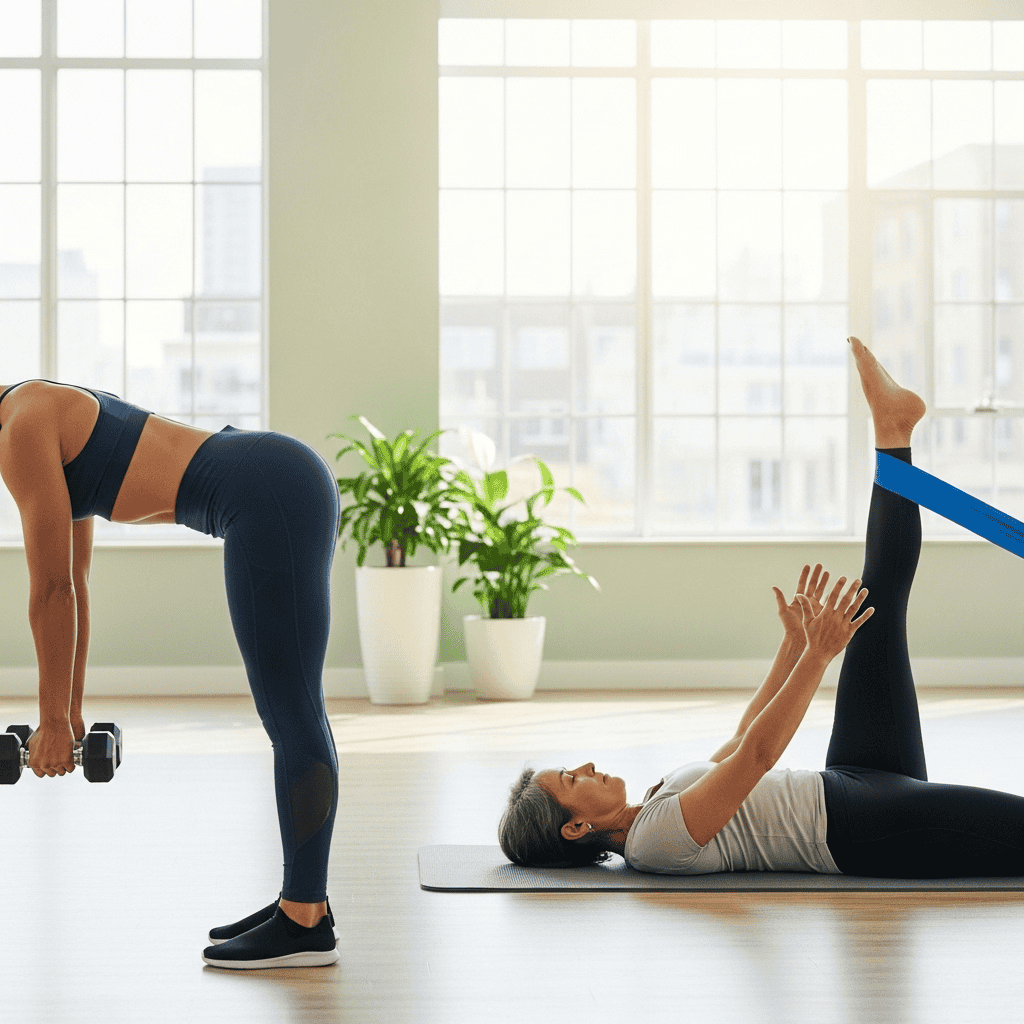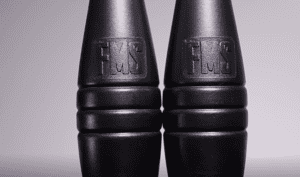From powering explosive athletic movements to simply standing upright with ease, the “posterior chain” is the unsung hero of your body. This vital network of muscles running along your backside—from your head down to your heels—is crucial for everything you do. Yet, for many, it’s often neglected, leading to a cascade of issues from poor posture and chronic pain to reduced performance and increased injury risk.
But what exactly is the posterior chain, and how can you keep it strong and supple? Let’s dive into the world of posterior chain mobility training, a comprehensive approach to unlocking your body’s true potential.
What is Your Posterior Chain?
Imagine a continuous line of muscle power connecting your entire back. That’s your posterior chain. It’s not just one muscle, but a synergistic group that includes:
- Glutes: Your gluteal muscles (maximus, medius, and minimus) are the largest and most powerful muscles in your body, essential for hip extension and rotation.
- Hamstrings: Comprising the biceps femoris, semimembranosus, and semitendinosus, these muscles run down the back of your thighs, crucial for knee flexion and hip extension.
- Erector Spinae: These muscles run along your spine, responsible for spinal extension and maintaining an upright posture.
- Calves: The gastrocnemius and soleus muscles in your lower legs, vital for ankle stability and propulsion.
- Upper Back Muscles: Extending upwards, the posterior chain also includes the latissimus dorsi, trapezius (upper, middle, and lower), rhomboids, and posterior deltoids.
These muscles work together as a unit to facilitate powerful movement, maintain stability, and support proper posture.
The Unrivaled Benefits of a Strong and Mobile Posterior Chain
Engaging in posterior chain mobility training offers a multitude of benefits for individuals of all activity levels, from elite athletes to those leading a more sedentary lifestyle:
- Enhanced Movement Efficiency and Functional Movement: By improving hip extension and core stability, a strong posterior chain allows for more fluid and effective movement. It strengthens muscles essential for everyday motions like bending, lifting, walking, running, and jumping, making these activities safer and more efficient.
- Improved Posture: A robust posterior chain supports proper posture, helping to counteract the negative effects of prolonged sitting and reducing the likelihood of slouching or developing a rounded back. It pulls the shoulders back and keeps the spine aligned, which is particularly vital as we age.
- Reduced Lower Back Pain: Strengthening these muscles provides stability to the spine and pelvis, which can significantly reduce the risk and alleviate existing lower back pain. Often, back pain stems from weakness or imbalance in this critical area.
- Increased Power and Explosiveness: For athletes, a strong posterior chain is crucial for generating power in explosive movements, beneficial for activities like sprinting, jumping, throwing, and lifting, directly translating to improved athletic performance.
- Injury Prevention: By fostering balanced musculature and providing spinal and pelvic stability, it significantly reduces the likelihood of hamstring strains, lower back injuries, knee pain, and other related issues. It also helps prevent age-related bone and muscle mass loss (sarcopenia).
- Counteracts Muscle Imbalances: Focusing on the posterior chain helps create balance between the front (anterior) and back of the body, preventing muscle imbalances that can lead to pain or dysfunction.
- Increased Blood Circulation: Regular posterior chain stretches and movements can also improve blood circulation, contributing to overall tissue health.
Common Mistakes to Avoid in Posterior Chain Training
To maximize the benefits and minimize the risk of injury, it’s crucial to be aware of common pitfalls in posterior chain exercises:
- Poor Form and Technique: This is perhaps the most prevalent mistake. Prioritizing heavy weights over correct exercise technique, especially in compound movements like deadlifts, can lead to injuries rather than strengthening the target muscles. Always prioritize controlled, precise movements.
- Neglecting the Posterior Chain: Many individuals, including some athletes, tend to focus heavily on “vanity muscles” in the anterior chain (quads, chest, biceps) while overlooking the crucial muscles of the glutes, hamstrings, and lower back. This imbalance is a recipe for dysfunction.
- Sedentary Lifestyle: Prolonged sitting causes the posterior chain muscles to relax and weaken, while anterior chain muscles (like hip flexors) can become shortened and stiff. This imbalance contributes significantly to poor posture and pain, even for those who exercise regularly.
- Muscle Imbalances and Altered Firing Patterns: A common issue is “lower crossed syndrome,” where tight hip flexors inhibit the gluteus maximus. This forces other muscles, like the hamstrings and lower back, to overcompensate, disrupting the optimal muscle firing pattern.
- Insufficient Glute Activation: Directly related to altered firing patterns, many people fail to properly engage their glutes during exercises, leading to other muscles overcompensating. Learning to “feel” and activate your glutes is key.
- Treating Hip-Dominant Exercises as Quad-Dominant: Exercises designed to be hip-dominant (like certain deadlift variations) are sometimes performed incorrectly, engaging the quadriceps more than the posterior chain. This diminishes their effectiveness for power development.
- Lack of Exercise Variety: Relying exclusively on one or two compound movements or overlooking single-joint exercises can lead to incomplete muscle development. A diverse range of exercises is recommended for balanced strength and mobility.
- Overextending the Back: Arching the lower back excessively at the top of movements (e.g., hyperextensions) can lead to strain and injury. Maintaining a neutral spine is critical.
- Rushing Movements: Performing exercises too quickly prevents proper muscle activation. A slow, controlled pace ensures the targeted muscles are effectively engaged throughout the full range of motion.
- Stretching the Lower Back Instead of Strengthening: While stretching can provide temporary relief, if the root cause of lower back pain is weak glutes or poor hip mechanics, simply stretching the lower back won’t offer a long-term solution. Strengthening is often more important.
Building Your Posterior Chain Mobility Program
A comprehensive approach to posterior chain mobility training integrates both strengthening and flexibility exercises. Consistency and proper form are paramount.
General Recommendations:
- Warm-up: Always begin with a warm-up to prepare your muscles. This can include light cardio (marching in place, gentle leg swings) and dynamic stretches.
- Listen to Your Body: Stretch to a point of gentle tension, not pain. If you feel sharp pain, stop immediately.
- Consistency is Key: Regular mobility work yields the best results. Aim for 3-5 sessions per week, either as a standalone session or as part of your warm-up/cool-down for other workouts.
- Proper Form: Focus on correct technique to maximize effectiveness and prevent injury. If unsure, seek professional guidance.
- Breathing: Breathe deeply and slowly throughout your exercises and stretches to help your muscles relax.
- Progression: As your flexibility and strength improve, you can gradually increase the duration of holds, the number of repetitions/sets, or the load/intensity of exercises.
Dynamic Warm-up & Flexibility Exercises:
Start your session with 5 minutes of light cardio and dynamic stretches to get blood flowing and prepare your joints and muscles.
- Cat-Cow Stretch: On all fours, arch your back (cat) and then round it (cow) to improve spinal flexibility. (8-12 repetitions)
- Bird Dog: On hands and knees, simultaneously extend one arm forward and the opposite leg backward, engaging your core. (8-12 repetitions per side)
- Sumo Squat: A deep squat with a wide stance, stretching the inner thighs and contributing to hip and posterior chain flexibility.
- Downward Facing Dog: A yoga pose that effectively stretches the entire posterior chain, from calves to hamstrings to spine.
- Lying Sphinx: Lie on your stomach, lift your chest, and support yourself on your forearms to gently extend and balance the spine.
- Nerve Flossing/Glides: Gentle movements (e.g., lying on your back, grabbing your thigh, and moving your lower leg up and down, pointing your toe towards your nose) to increase nerve mobility in the lower extremity posterior chain.
Strengthening Exercises:
These exercises target and build strength in the various muscles of your posterior chain.
- Deadlifts (Traditional and Romanian Deadlifts – RDLs): Compound exercises that effectively engage the lower back, glutes, and hamstrings. RDLs start from a standing position, focusing on the hip hinge.
- Kettlebell Swings: Excellent for engaging the entire posterior chain, improving hip mobility, core stability, and explosive muscle strength.
- Hip Thrusts and Glute Bridges: These target the gluteal muscles and hamstrings, promoting hip extension and strengthening the lower glutes.
- Squats (including Chair Squats): Work the gluteal and calf muscles, as well as the hamstrings. Chair squats are a great modification for beginners or older adults.
- Reverse Lunges: Important for strengthening the gluteus maximus and improving unilateral strength.
- Standing Hip Extension: Focuses on squeezing the gluteal muscles by extending one leg backward while using support.
- Resistance Band Pull-Throughs (Cable Pull-Through): A low-impact exercise for activating the glutes and hamstrings by extending hips forward against resistance.
- Hamstring Curls: Can be performed with a machine or free weights to specifically target the hamstrings.
- Calf Raises: Strengthen the calf muscles, which are the lowest part of the posterior chain. Can be done seated or standing.
- Pull-ups and Rows: Engage the upper back muscles, including the latissimus dorsi, trapezius, rhomboids, and rear deltoids.
- Back Extensions/Reverse Back Extensions: Targets the lower back, glutes, and hamstrings, focusing on spinal erectors.
- Swimming Exercise: Performed lying on your stomach, lifting alternate arms and legs, activating lower back muscles like the erector spinae and engaging the core.
Mobility & Flexibility Exercises (Deeper Stretches):
Incorporate these stretches to improve flexibility and range of motion. Hold static stretches for 30-60 seconds, or even up to two minutes for deeper release.
- Hamstring Stretches:
- Supine Hamstring Stretch: Lie on your back, extend one leg towards the ceiling, and gently pull it towards your chest using your hands or a strap. Keep the knee slightly bent.
- Standing Hamstring Stretch: Stand tall and step forward with one foot, flexing it towards you. Hinge at the waist, reaching hands towards toes, keeping the core engaged.
- Doorway Hamstring Stretch: Sit close to a doorway with one leg straight through, and the other leg high up the doorframe.
- Hip & Glute Stretches:
- Seated Figure-Four Stretch (Glute/Piriformis): Sit, place one ankle on the opposite knee, and gently lean forward to feel the stretch.
- Hip Flexor Stretch (Deep Lunge): Kneel on one knee, step forward with the other foot, and lean into the lunge, stretching the hip of the back leg.
- Bottom-up Stretch: Place hands on a box or floor, lock elbows, and push your glutes up and down, stretching from the hip. (About 10 repetitions).
- 90/90 Drops: While seated, drop both bent knees to one side, pivoting off the heel, then switch sides.
- Seated Pigeon Pose: Supports hip mobility and activates hip flexors, reducing back pain.
- Spinal Mobility:
- Pelvic Tilts: Help loosen hip flexor muscles and mobilize the lower spine.
- Posterior Chain Stretch (Feet on Wall): Lie on your back with hips touching a wall, knees bent, feet flat on the wall. Raise legs slightly while only heels touch the wall. Hold for at least one minute.
- Half Saddle Pose: A yoga-inspired stretch for the hips and thighs, can alleviate lower back pain.
Sample Posterior Chain Mobility Program (10-20 minutes, 3-5 times/week)
- Warm-up (5 minutes):
- Light cardio (marching in place, gentle leg swings)
- Cat-Cow (8-12 reps)
- Bird Dog (8-12 reps per side)
- Mobility Circuit (10-15 minutes): Perform 1-2 sets. Hold static stretches for 30-60 seconds; dynamic movements for 8-12 reps per side.
- Hamstrings:
- Supine Hamstring Stretch (30-60 seconds hold per leg)
- Standing Hamstring Stretch (30-60 seconds hold per leg)
- Glutes/Hips:
- Seated Figure-Four Stretch (30-60 seconds hold per leg)
- Hip Flexor Stretch (Deep Lunge) (20-30 seconds hold per side)
- 90/90 Drops (8-12 repetitions per side)
- Lower Back:
- Posterior Chain Stretch (Feet on Wall) (1 minute hold)
- Calves:
- Standing Calf Stretch (30-60 seconds hold per leg)
- Hamstrings:
- Cool-down (2-3 minutes):
- Gentle, easy movements and deep breathing to relax the body.
Tailoring Your Training: Athletes vs. Sedentary Older Adults
While the core principles remain the same, the intensity, complexity, and specific goals of posterior chain training differ significantly between athletes and sedentary older adults.
For Athletes: Unlocking Peak Performance
Athletes heavily rely on a powerful and flexible posterior chain for peak performance. The focus is on generating explosive power, speed, agility, and enhanced stabilization.
Key Benefits for Athletes:
- Increased Power and Explosiveness for sprinting, jumping, and throwing.
- Improved athletic performance across various sports.
- Enhanced stabilization in the ankles, knees, hips, and spine during dynamic, high-impact actions.
Common Exercises for Athletes:
Athletes typically incorporate compound movements with heavier loads to build maximal strength and power.
- Deadlifts (Traditional and Romanian Deadlifts): Cornerstone exercises for overall strength and hip hinge development.
- Kettlebell Swings: Dynamic, powerful, and excellent for hip drive and conditioning.
- Glute-Ham Raises (GHR): Specifically target hamstrings and glutes, focusing on neuromuscular activation and strength.
- Back Squats: Emphasize glutes, hamstrings, and lower back, contributing to overall lower body strength.
- Nordic Hamstring Curls: Advanced exercise for eccentric hamstring strength and injury prevention, particularly beneficial for sprinters.
- Good Mornings: Focus on hip hinging and hamstring flexibility under load.
For Sedentary Older Adults: Enhancing Quality of Life
For sedentary older adults, posterior chain mobility training primarily aims to improve quality of life, maintain independence, prevent falls, and alleviate pain associated with aging and inactivity. The approach emphasizes safety, functional movements, and gradual progression.
Key Benefits for Sedentary Older Adults:
- Fall Prevention: A strong posterior chain enhances balance and stability, significantly reducing the risk of falls.
- Improved Mobility and Independence: Strengthens muscles crucial for daily activities like standing, walking, and getting up from a chair.
- Reduced Back and Shoulder Pain: Addressing weakness in the posterior chain can alleviate chronic discomfort.
- Counteracting Sarcopenia: Resistance training helps combat age-related muscle loss.
- Better Posture: Crucial for counteracting kyphosis (rounding of the spine), which affects many older adults.
Common Exercises and Modifications for Older Adults:
Exercises for older adults often involve bodyweight or light resistance, focusing on control and proper form. Modifications are frequently used to ensure safety and accommodate varying fitness levels.
- Glute Bridges/Hip Thrusts: Foundational exercises for activating glutes and hamstrings. Can be adapted with a low bench or chair for support.
- Chair Squats: Safely strengthen glutes and calves by using a chair for support, focusing on controlled lowering and standing.
- Step-Ups: Strengthen multiple posterior chain muscles and improve balance using a low step or sturdy bench.
- Standing Hip Extension: Using support (like a wall or chair), gently extend one leg backward to engage gluteal muscles.
- Modified Pull-Ups and Rows: Using resistance bands, assistance machines, or bodyweight rows with feet on the floor to safely build upper body posterior chain strength.
- Calf Raises: Target calves to improve strength and balance, which is crucial for gait and fall prevention.
- Hip Hinges (without weight initially): To safely learn the movement pattern of deadlifts, progressing to light weights as appropriate.
- Gentle Stretches: Pelvic tilts, Cat-Cow, Deep Lunges (hip flexor stretch), and Doorway Hamstring Stretches are important for maintaining flexibility and range of motion.
When to Seek Professional Guidance
While this guide provides comprehensive information, if you have any pre-existing health conditions, injuries, or experience persistent pain, it is always recommended to consult with a qualified physical therapist. They can provide a personalized assessment, ensure proper form, and tailor a posterior chain mobility program to your specific needs and goals.
Embrace the Power of Your Backside!
The posterior chain is a true powerhouse, influencing everything from your daily comfort to your peak performance. By understanding its importance, avoiding common mistakes, and consistently incorporating both strengthening and mobility exercises, you can unlock a healthier, stronger, and more agile you. Start nurturing your backside today and feel the profound difference it makes in your life.




